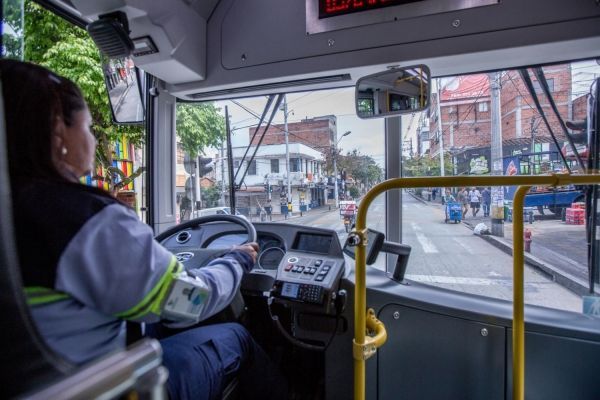In Medellín, Colombia, passengers cram aboard a battery-powered bus during the morning commute. Inside, the vehicle is a respite from the crush of cars, taxis, and motorcycles winding through traffic outside. The driver, Robinson López Rivera, steers the bus up a steep ramp, revealing views of hillsides covered with rooftops of tile and tin. The bus dashboard indicates that the batteries are mostly charged, with enough power to last through the evening rush hour.
“It’s a little smoother and more comfortable to drive. And there’s hardly any noise,” López Rivera says from behind the wheel. He gently brakes as a street vendor pushes a fruit cart across the dedicated bus lane. At night, the bus will return to a parking lot by the airport, recharging its 360-kilowatt battery pack while the city sleeps.
The other 77 buses in the city’s bus rapid transit system, called Metroplús, run on natural gas and move about 251,000 passengers daily. Thousands more privately owned coaches and minibuses burn diesel as they traverse the sprawling metropolitan area of 3.7 million people, with older models leaving a trail of sour-smelling smoke. Faced with chronic air pollution and concerns about climate change, Medellín is now trying to move quickly to electrify its entire mass transit network.
Read more at: Yale Environment 360
An electric bus in service on the streets of Medellín, Colombia. METRO DE MEDELLÍN


